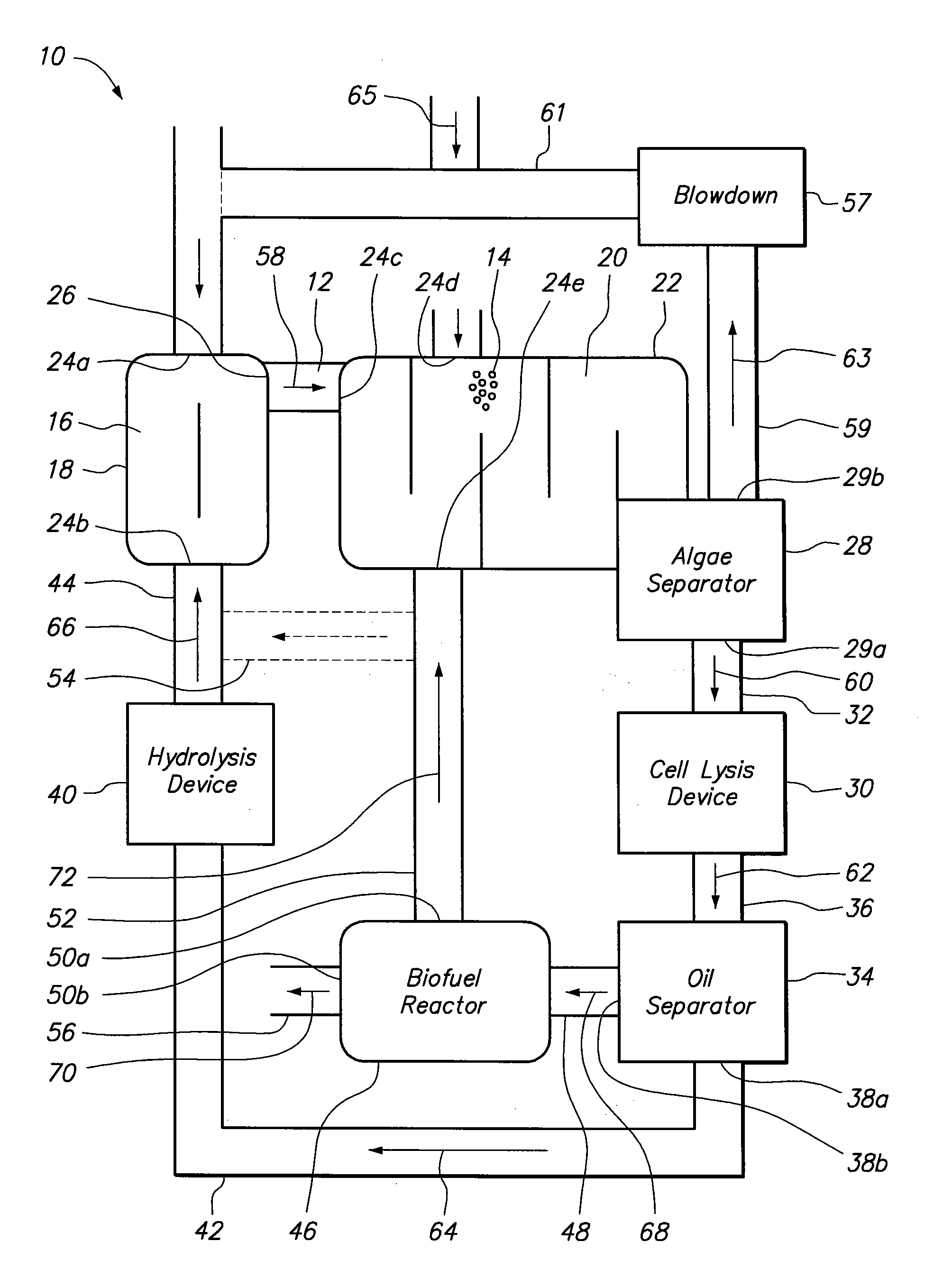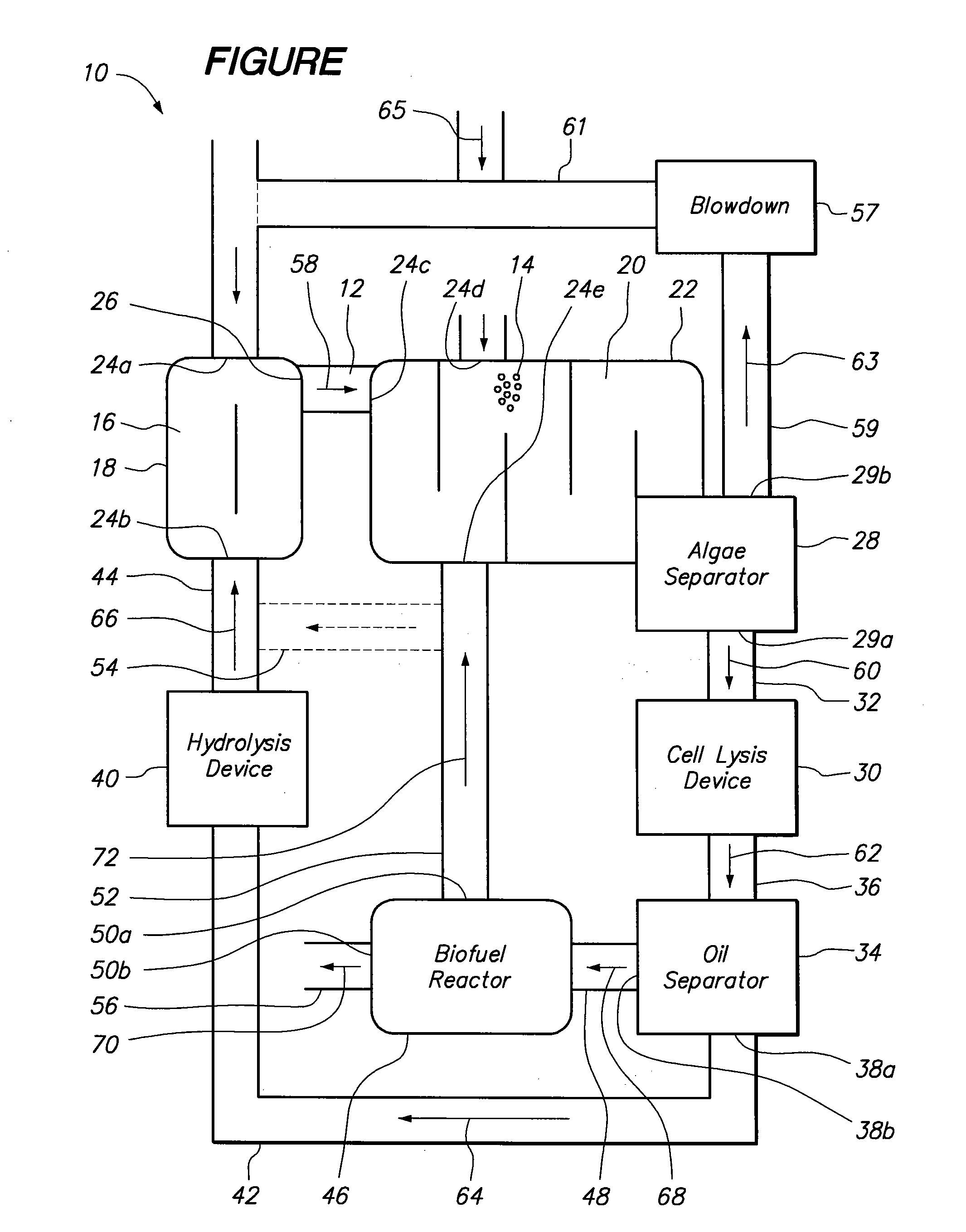Photosynthetic oil production with high carbon dioxide utilization
a photosynthesis and carbon dioxide technology, applied in the field of photosynthesis oil production with high carbon dioxide utilization, can solve the problems of increasing the cost of hydrocarbon production, the cost of the process involved in creating algae-derived biofuel, and the shortage of hydrocarbon products, etc., to achieve the effect of increasing the rate of intracellular oil production, facilitating absorbing, and effectively forming two streams
- Summary
- Abstract
- Description
- Claims
- Application Information
AI Technical Summary
Benefits of technology
Problems solved by technology
Method used
Image
Examples
Embodiment Construction
[0011]Referring to the Figure, a system for processing oil from algae in accordance with the present invention is shown and generally designated 10. Specifically, in the system 10 byproducts of the processing method are recycled to foster growth of algae cells having high oil content. As shown, the system 10 includes a conduit 12 for growing algae cells with high oil content (exemplary cells depicted at 14). As further shown, the conduit 12 includes an upstream conduit section 16 that is defined by a continuously stirred first stage reactor or chemostat 18. Also, the conduit 12 includes a downstream conduit section 20 that is defined by a plug flow second stage reactor 22. As shown, each conduit section 16, 20 includes input ports 24a-e. Further, the upstream conduit section 16 includes an output port 26. As shown, the output port 26 of the upstream conduit section 16 and the input port 24c of the plug flow reactor 22 are in fluid communication. In this manner, the conduit 12 passes...
PUM
| Property | Measurement | Unit |
|---|---|---|
| velocity | aaaaa | aaaaa |
| velocity | aaaaa | aaaaa |
| residence time | aaaaa | aaaaa |
Abstract
Description
Claims
Application Information
 Login to View More
Login to View More - R&D
- Intellectual Property
- Life Sciences
- Materials
- Tech Scout
- Unparalleled Data Quality
- Higher Quality Content
- 60% Fewer Hallucinations
Browse by: Latest US Patents, China's latest patents, Technical Efficacy Thesaurus, Application Domain, Technology Topic, Popular Technical Reports.
© 2025 PatSnap. All rights reserved.Legal|Privacy policy|Modern Slavery Act Transparency Statement|Sitemap|About US| Contact US: help@patsnap.com


